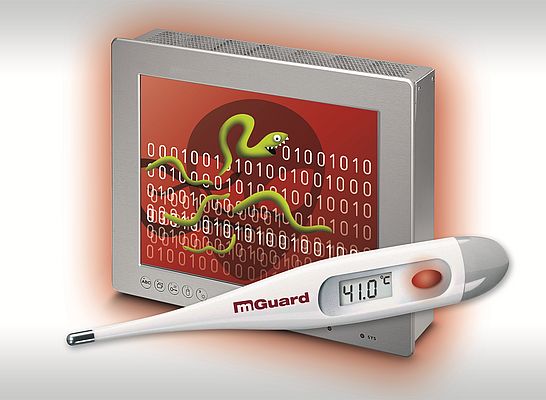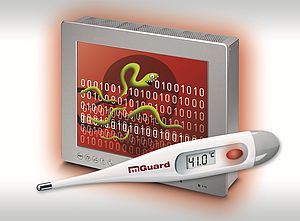Following its discovery in June 2010, the Stuxnet worm triggered a worldwide sensation. It was the first publicly known root-kit attack targeted at industrial plants, infecting thousands of PCs, abusing and manipulating Windows-based automation software to infiltrate malicious code into the controllers of specific real-world industrial installations. After Stuxnet, the threats from malware and insufficient IT security in automation networks, forecast by industry experts for a long time now, can no longer be ignored. The real danger looming out there, however, is not from Stuxnet itself, but rather from mutations likely to be created by imitators who could now circulate other arbitrary, malicious code utilizing the same basic techniques. And while Stuxnet focused on products from the Siemens SIMATIC family and on STEP 7 PLC projects with very specific properties, such mutations could affect components from other vendors as well, and turn out to be a lot less selective in their damaging impact. Apart from the fact that PCs in industrial use often are not (and cannot be) equipped with antivirus software, Stuxnet has also made it clear that conventional virus scanners do not provide protection against attacks of this caliber. In retrospect, the analysis of Stuxnet has shown that the worm had been out in the wild unnoticed for at least 12 months before its discovery and had not been detected by antivirus programs during that period for lack of any known signatures for the malware. Damaging Impact in Four Steps
To develop protective measures against Stuxnet-like attacks, a basic understanding of the worm’s activities is essential. It unfolds its damaging impact in four steps on different layers. 1. Infection of Windows PCs: The worm uses an aggressive mix of mechanisms to spread onto and contaminate both networked as well as non-networked Windows PCs (via USB flash drives). It utilizes a total of four zero-day exploits of previously unknown vulnerabilities which exist in several generations of Windows operating systems, and have only partially been fixed by security patches to date. In addition to a number of encrypted files, Stuxnet installs two device drivers which have been signed with stolen private digital keys from Realtek and JMicron and therefore contain certificates which are rated as trustworthy by Windows. 2. Abuse and manipulation of automation Software: If Stuxnet comes across installations of WinCC visualization and/or STEP 7 engineering components on an infected PC, it abuses and manipulates any found WinCC databases and STEP 7 projects to ensure its further proliferation and persistency on the PC, and to spy out the controllers referenced in those projects as potential targets for step 3. Furthermore, Stuxnet renames the dynamic link library which is responsible for the communication between SIMATIC Manager and the projected S7 controllers and replaces it with a wrapper DLL of its own under the original name in the same directory, hiding the modification. 3. Injection of malicious code into controllers: This manipulated wrapper DLL enables Stuxnet to infiltrate arbitrary malicious code into the projected PLCs, to hide those manipulations from the programming engineer, and to safeguard them from overwriting. The precise malicious code selectively injected into controllers and projects, is of remarkable sophistication and – according to expert findings – is supposed to permanently manipulate frequency converters and turbine controls as inconspicuously as possible, with the goal of disrupting the controlled processes and ultimately destroying the affected equipment. 4. Communication with command & control servers on the internet: From infected PCs, the worm attempts to contact its designated command & control servers on the Internet. When a connection gets established, information collected from the target and its environment can be uploaded to those servers as well as new instructions and updates to the worm, and its malicious payload can be received and executed. This adds an extra dynamic depth to the worm’s potential for espionage and sabotage. Combined with the worm’s capabilities to spread and update itself via peer-to-peer connections and USB drives, all of this can have collateral effects even on systems without a network connection or Internet access. Discover malware on day zero
Due to the difficulties of deploying antivirus software on industrial PCs and with the timely provision of malware signatures, alternative techniques of integrity assurance are gaining relevance and acceptance for the protection of industrial systems. The mGuard CIFS Integrity Monitoring method, for instance, provides monitoring of configurable sets of files on PCs for unexpected modifications of executable code. When initialized, it computes a baseline of signatures for all monitored objects and then periodically checks them for deviations. This process works without external provision of virus signatures, without the risk of disrupting operations through “false positives,” without installation of software, and with moderate load on the monitored PCs, by utilizing the processing resources of an mGuard security appliance. In this way, suspect modifications are reliably discovered and promptly reported to network management systems or administrators. In a test study performed at the University of East Westphalia-Lippe in Germany, researchers have been able to verify that mGuard CIFS Integrity Monitoring recognized infections with Stuxnet and would have done so on day zero of its exploit. It would have unveiled the unexpected manipulations by the worm and warned asset operators about them long before any commercial antivirus product. Both the device drivers installed by Stuxnet as well as the modifications performed by the worm on the pivotal SIMATIC Manager DLL were immediately discovered in the process. And while antivirus products need frequent, continuous pattern updates – mGuard CIFS Integrity Monitoring does not need any patterns at all. Contain proliferation, prevent virus c&c transmissions
When spreading across networks and vulnerabilities in operating systems, malware often takes advantage of network connections that are not necessary for the productive operation of a plant. The correct protection of industrial PCs and controllers or groups of such devices with mGuard firewalls reliably blocks these unsolicited connections and restricts the proliferation of malware. In the case of Stuxnet, healthy systems could be infected by both incoming as well as outgoing connections – and contaminated systems could spread their infection via corresponding outgoing and incoming connections. When protecting systems with firewalls, the often neglected outgoing connections (not only the incoming) should also be filtered as much as possible. This will prevent contacts via outgoing connections to command & control servers on the Internet and the associated potential for espionage and dynamic threats. Authenticated and authorized PLC programming
Most PLCs on the market today barely offer authentication and authorization functions to protect their own programming process. Contrary to popular beliefs, programming and other manipulation of such controllers does not require a specific or vendor-authorized engineering software package. Whoever has network access to the programming port and adheres to the correct protocol will be master of the PLC. Protective measures are typically limited to an access control list (ACL) restricting programming access to a number of IP addresses. No further checking of users and programs accessing the PLC from these IP addresses or their actual authorization to do so is taking place. Insidiously, Stuxnet is using exactly those engineering and visualization PCs for its attack on the PLCs which are designated for legitimate communication with the controllers. The ACLs are useless here as are static firewall rule sets, because the malware’s access to the controllers originates from authorized nodes. In contrast, the mGuard User Firewall presents an effective means to prevent the manipulation of controllers by unauthorized programming access. When in place, network access to the programming port first needs to be unlocked at the firewall by authentication of an authorized user, which the malware cannot achieve on its own. Bearing in mind the manipulations performed by Stuxnet on the engineering software, it becomes apparent just how important it is to combine the techniques described above. An authorized user should, of course, unlock access through the mGuard User Firewall only after having assured himself of the programming environment’s integrity, which in turn is supported by mGuard Integrity Monitoring. While even more advanced security technologies such as application whitelisting or intrusion prevention may become available in forthcoming generations of automation equipment, all of the methods presented in this paper lend themselves perfectly for retrofitting into existing installations today.
Post-Stuxnet industrial security
Prevention from root-kit attack targeted at industrial plants
- by Innominate Security Technologies AG
- May 16, 2011
- 2085 views


















